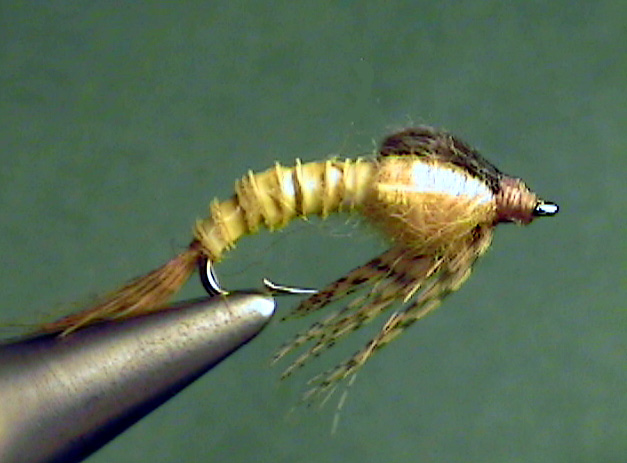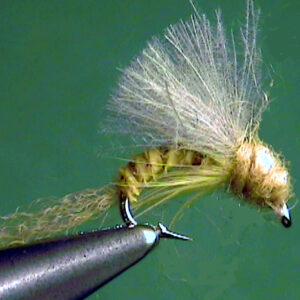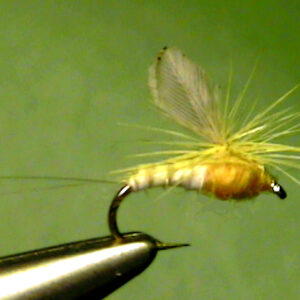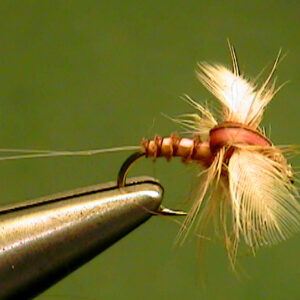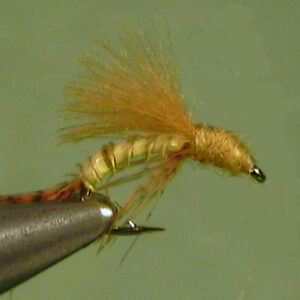Hook Size: 14/16
of rocks or down in between the cracks and crevices of the rocks on the bottom.
Most of the time they are not readily available for the trout to eat. They are found
on the bottom of the runs and riffles of the streams. The nymphs rely on the fast,
highly oxygenated water for the oxygen they need to survive. That is why the
bodies of the clinger nymphs are designed to cling to rocks. They must be able
to hang onto the rocks in the current.
When it is near the time for them to hatch, they migrate to the slower moving,
calmer water nearby their fast water habitat. As with most of the other clinger
nymphs, I recommend fishing imitations of the nymph only when the hatch is
either about to begin or underway. By underway, I mean on the days the hatch is
occurring, not during the time the duns are emerging.
Presentation:
When you anticipate a hatch is about to begin, or if you have determined it has
already started, you may want to try imitating the nymphs migrating from their
normal fast water habitat to slower, more moderately flowing water close by. If
the hatch has begun, you would want to do this in the mornings and early
afternoon up until the time the nymphs begin to emerge. Fish your imitation
heavily weighted, right on the bottom at the edges or seams of the fast moving
riffles and runs. Your basic approach should be focused on bringing the nymph
out of the fast water into the areas where the water is moving slower. This could
be pockets along the outside edge of a run. The current seams created by
pockets or slicks behind bounders is another place you would want to
concentrate on.
I usually place split shot about six to eight inches above the nymph. You want to
keep adding weight until you can get the nymph down quickly and keep in on the
bottom.
Short up-stream or up and across presentation work best for this. You can also
use the typical “high-stick” method of nymphing but I feel like short cast works
better. Strike indicators can be used but I feel like they hurt the presentation by
keeping the fly off of the bottom. Use a relatively short leader of about seven and
a half feet. If you make short cast, not over twenty feet long, and keep a relatively
tight line you can either feel the takes or see the end of your fly line stop or move
unnaturally in the drift.
